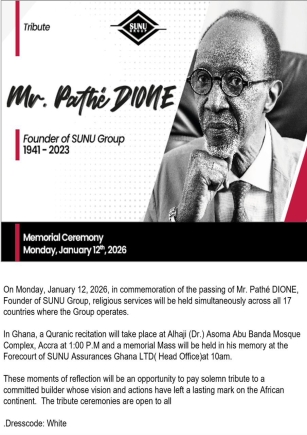
Self-prescribed exercise engagement: playing it safe
Exercise is a form of physical activity. It is any movement that is planned and performed purposely to maintain or improve physical fitness. It may also be in the form of recreation, which is any pursuit engaged in during leisure time that is organised for social purposes.
Although it is no longer news that participation in regular exercises contributes to the primary and secondary prevention of diseases of the heart and the entire circulatory system, awareness of its types and the amount needed could go a long way in securing the maximum benefits.
Exercise is associated with a reduced risk of premature death as it extends years of active independent living among older adults. Elite individuals across age groups largely engage in exercise either to gain health benefits or for social purpose. A well prescribed exercise is generally associated with 50 per cent reduction in adverse events from large blood vessels disease.
Recent studies have shown that even lower volumes of exercise confer health benefits, particularly among deconditioned individuals and those recuperating. The benefits of exercise extend well beyond the heart and circulatory system. Evidence suggests that exercise prevents a decline in bodily faculties, sensibilities and energies (senescence), and that active individuals are at lower risk of developing certain malignancies, including cancer of the prostate and the colon, osteoporosis, depression and dementia. In addition, there is better function of bones and muscles to ensure normal joint flexibility.
Health-related physical fitness
The ultimate goal of exercising is to attain fitness. Health-related physical fitness refers to a physiologic state of well-being that allows one to meet the demands of daily living (health-related physical fitness) or that provides the basis for sport performance (performance-related physical fitness), or both. Physical fitness remains a key requirement for good health among the general populace and it measures the level of activity participation of individuals. Aerobic and “anaerobic” are commonly used to define fitness in the health and fitness industry.
A sharp difference exists between the two. Aerobic fitness refers to the body’s ability to transport and use oxygen during prolonged strenuous exercise or work and it involves the use of more muscles during performance whereas anaerobic fitness refers to the body’s ability to produce energy without the use of oxygen and fewer muscles are involved. Both forms are largely adopted by many participants of exercise. Irrespective of the forms of the fitness programme embarked upon, there are prerequisites for optimal exercise engagement, taking into consideration many factors ranging from health status, age, sex and physical needs.
Optimal engagement in exercises
Guidelines for improving physical fitness have evolved continually as new evidence becomes available on the levels of exercise required for health benefits. There are published guidelines by recognised international professional bodies including the Centre for Disease Control and Prevention, American College of Sports Medicine, Canadian Physical Activity Guidelines and a host of others. For instance, the Canadian Physical Activity Guidelines stipulate that adults aged 18-64 years are expected to accumulate at least 150 minutes of moderate to vigorous exercise per week in bouts of 10 minutes or more to achieve health benefits of exercise. In other words, healthy adults should engage in a moderate-intensity aerobic physical activity for a minimum of 30 minutes for five days per week.
Generally, exercises to improve physical health-related fitness levels are categorised into four:
Light effort aerobic exercises
These are light exercises performed for about 60 min per day and most preferably all days of the week. Examples include light gardening and light walking. These types of exercises are good for deconditioned individuals and older adults.
Moderate-effort aerobic exercise
Exercises under this category are performed 20–60 min per day and three to five days per week. Examples include brisk walking (15–20 mins per mile), stair climbing, skipping and dancing.
High- effort aerobic exercise
These are also performed 20-60 minutes per day and three-five days per week. These include jogging, swimming, running, etc.
Resistance and flexibility exercise
One to two sets (each set eight –12 repetitions) of eight –10 different resistance exercises of moderate intensity that engage the large muscle groups, two to four days per week. People over 60 years and frail people may need to engage in more repetitions (10–15 mins) to compensate for a lower resistance requirement. Gentle reaching, bending and stretching exercises of the major muscle groups to improve flexibility fall under this category.
Although exercises have many benefits, they must be tailored to the needs of individuals to ensure safety. Performance must always start and end slowly to allow the heart and the body segments to adjust to their changing role. Also, break in between exercises is necessary to allow for tissue recovery. Poorly adopted exercise participation could portend danger to the body.
The writer is a Physiotherapist and Senior Lecturer, Department of Physiotherapy, School of Biomedical and Allied Health Sciences, College of Health Sciences,University of Ghana.
E-mail : aibello@.ug.edu.gh

